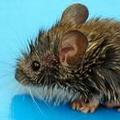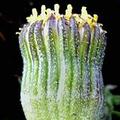 科學界發現三個新物種,以及另外一種可能是在全世界最高之一的秘魯安地斯森林中發現的新物種。
科學界發現三個新物種,以及另外一種可能是在全世界最高之一的秘魯安地斯森林中發現的新物種。
在靠近秘魯安卡什地區(Ancash Region)布蘭卡山脈(Cordillera Blanca)的雪山附近,科學家確認發現了二種新的甲蟲物種以及一種新的植物物種。
而在安地斯森林中他們同時也發現了一種小老鼠,其可能是一種新種的「南美原鼠」(Akodon sp. nov),科學家表示這可能是之前都沒有被發現過的新物種。
在新確認的3個新物種當中,其中之一是一種安地斯高地的濕地植物Senecio sanmarcosensis,另外二個新的甲蟲物種分別為Eriopis canrash以及Cycloneda andresii。這4個新物種都是在2005年到2008年之間所進行的一系列探險遠征隊活動所發現的成果。
而其是由祕魯保育團體「安地斯生態協會」(Asociacion de Ecosistemas Andinos, ECOAN)以及總部位於華盛頓特區的「國際保育組織」(Conservation International)所共同研究發現。
 「國際保育組織」位於秘魯的執行長艾斯比內爾(Luis Espinel)表示,「國際保育組織對於能成為發現新物種的其中一員感到非常榮幸,新物種的發現讓我們必須更加強調Polylepis森林生態系統的重要性,因為其擁有高度集中的生物多樣性,同時也是生存在該地區許多社群的水資源來源。」
「國際保育組織」位於秘魯的執行長艾斯比內爾(Luis Espinel)表示,「國際保育組織對於能成為發現新物種的其中一員感到非常榮幸,新物種的發現讓我們必須更加強調Polylepis森林生態系統的重要性,因為其擁有高度集中的生物多樣性,同時也是生存在該地區許多社群的水資源來源。」
因此,「安地斯生態協會」也協同當地社群的合作參與,積極規劃保護秘魯Polylepis森林的保育行動。Polylepis森林西班牙文稱為quenuales。
安地斯生態協會主席阿尤卡(Constantino Auca)也表示,「這是一個非常美好的經驗能夠參與這個科學探險隊並且針對13座安地斯森林進行生物多樣性的研究,不僅能夠觀察整體的森林景觀,同時也有機會能跟當地民眾交流。」
而這些物種所賴以生存的quenuales森林對於防止土壤受到侵蝕也至關重要,其不僅能作為山谷居民的重要儲水池,同時也能製造氧氣,這對於在空氣稀薄的安地斯高地中生活是相當必須的。
而南美原鼠的新物種則生存於海平面2880公尺(9449呎)到4733公尺(15528呎)之間,而且只有在阿卡什地區能發現。發現這個原鼠新物種的科學家表示,這種原鼠在平衡昆蟲族群以及透過生物系統傳播種子的生物之間扮演著相當重要的控制作用。
Three species that are new to science and one that is probably new have been discovered in forests of the Peruvian Andes that are among the highest in the world. Near the snow-capped mountains of the Cordillera Blanca in the Ancash Region of Peru, scientists identified two new beetles and a new plant.
They also found a small mouse, Akodon sp. nov, they say has probably never been identified before.
Confirmed as new species are a high Andes wetlands plant, Senecio sanmarcosensis, and the two beetles, Eriopis canrash and Cycloneda andresii. The four species were all discovered during a series of expeditions conducted between 2005 and 2008.
The Peruvian conservation group Asociacion de Ecosistemas Andinos, or ECOAN, and the Washington, DC-based group Conservation International are partners in the discoveries.
"Conservation International is very proud to be part of this initiative. The discovery of the species allows us to highlight the importance of the Polylepis forest ecosystems because of its high concentration of biodiversity and because of its function as water sources for many of the communities living in the area,?said Luis Espinel, executive director of Conservation International in Peru.
With the participation of local communities, ECOAN works to protect Peru's Polylepis forests, commonly called by their Spanish name, quenuales.
"It has been an amazing experience to have participated in a scientific expedition, studied the biodiversity of 13 Andean forests," said Constantino Auca, ECOAN's president. "You get to know the landscapes and overall, you have the chance to talk to the local population."
The quenuales forests, where these species live, are vital to limiting soil erosion. They are reservoirs for water that is critical to the valley populations and at the same time, they produce oxygen, so vital to life in the thin air of the high Andes.
The mouse lives between 2,880 meters (9,449 feet) and 4,733 meters (15,528 feet) above sea level and is only found in the Ancash region. The scientists who found the mouse say it plays an important role in controlling insect populations and dispersing seeds throughout the ecosystem.


